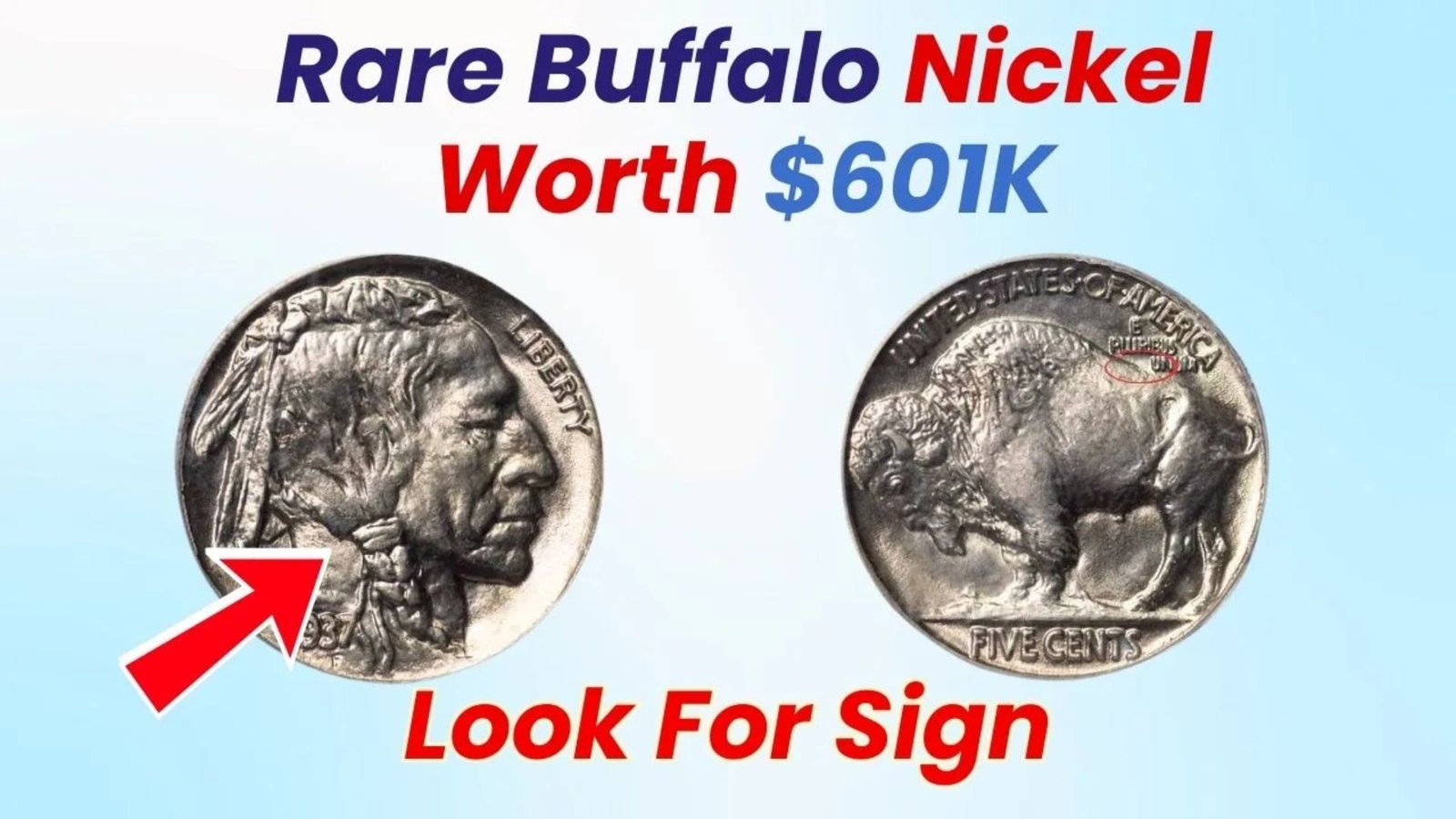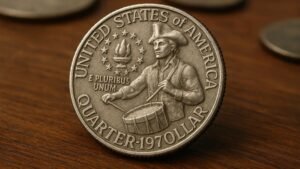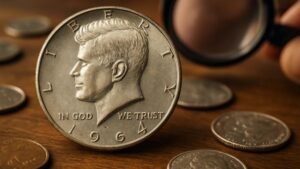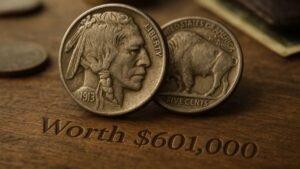Have you ever checked your coin collection or spare change for a rare gem? A Buffalo Nickel, also called the Indian Head Nickel, could be hiding in your pocket or jar, potentially worth a fortune—some as much as $600,000! This iconic American coin, minted from 1913 to 1938, is a collector’s dream due to its unique design and rare varieties. In this guide, we’ll explain what makes certain Buffalo Nickels so valuable, how to spot them, and why they’re still found in circulation today. Let’s dive into this exciting treasure hunt!
What Is a Buffalo Nickel?
The Buffalo Nickel is a five-cent coin produced by the United States Mint between 1913 and 1938. Designed by sculptor James Earle Fraser, it features a Native American profile on one side (the obverse) and a bison, often called a buffalo, on the other (the reverse). Its striking design and historical significance make it a favorite among coin collectors.
While most Buffalo Nickels are worth a few cents to a few dollars, certain rare versions can fetch hundreds of thousands at auctions. These high-value coins are rare due to specific minting errors, low production numbers, or excellent condition.
Why Are Some Buffalo Nickels So Valuable?
Certain Buffalo Nickels stand out because of unique characteristics that make them highly sought after. Here are the key factors that drive their value:
- Minting Errors: Mistakes during production, like double-struck designs or missing mint marks, make some coins one-of-a-kind.
- Low Mintage: Coins produced in smaller quantities, such as those from specific years or mints, are harder to find.
- Condition: Coins in pristine or “mint” condition, with minimal wear, are worth significantly more.
- Historical Significance: Rare varieties tied to specific years or events attract collectors willing to pay top dollar.
For example, a 1918/7-D Buffalo Nickel, where the date was accidentally overstruck, sold for over $600,000 at auction due to its rarity and error.
How to Identify a Valuable Buffalo Nickel
Think you might have a valuable Buffalo Nickel? Here’s how to check your coins for the rare ones:
Step 1: Look at the Date
The date on the coin is critical. Some years are more valuable due to low production or errors. Key dates to watch for include:
- 1918/7-D: This overdate error is one of the rarest and most valuable.
- 1937-D 3-Legged Buffalo: A minting mistake makes the buffalo appear to have only three legs.
- 1935 Doubled Die Reverse: The back of the coin shows a doubled image, increasing its value.
Step 2: Check the Mint Mark
The mint mark, a small letter on the coin, shows where it was made. Look for:
- D (Denver)
- S (San Francisco)
- No mint mark (Philadelphia)
Coins from Denver or San Francisco, especially in certain years, are often rarer.
Step 3: Inspect the Condition
The better the condition, the higher the value. Use a magnifying glass to check for wear on the buffalo’s horn or the Native American’s hair. Coins graded as “Mint State” (MS) by professional services like PCGS or NGC are worth more.
Step 4: Spot Errors
Look for unique errors, like doubled dates or missing legs on the buffalo. These quirks can make an ordinary nickel extraordinary.
| Key Buffalo Nickel | Year | Mint Mark | Estimated Value | Why It’s Valuable |
|---|---|---|---|---|
| 1918/7-D | 1918 | D | $350,000–$600,000 | Overdate error |
| 1937-D 3-Legged | 1937 | D | $50,000–$100,000 | Missing leg error |
| 1935 Doubled Die | 1935 | None | $10,000–$50,000 | Doubled reverse image |
| 1916 Doubled Die | 1916 | None | $100,000–$300,000 | Doubled obverse |
Are Buffalo Nickels Still in Circulation?
Yes, it’s possible to find Buffalo Nickels in circulation, though it’s rare. These coins were used widely decades ago, and some still turn up in change, old collections, or inherited coin jars. While most circulated Buffalo Nickels are worth only a small amount, the rare varieties mentioned above could make you rich if you find one.
Check places like:
- Old piggy banks or coin jars
- Family heirlooms or estate sales
- Local coin shops or flea markets
Tips for Starting Your Buffalo Nickel Hunt
Ready to search for your own treasure? Follow these tips to increase your chances of finding a valuable Buffalo Nickel:
- Organize Your Collection: Sort through your coins and group Buffalo Nickels by year and mint mark.
- Use Proper Tools: A magnifying glass or jeweler’s loupe helps spot errors and assess condition.
- Learn Grading Basics: Understand terms like “Fine,” “Very Fine,” or “Mint State” to estimate value.
- Consult Experts: Take rare finds to a professional coin dealer or grading service for authentication.
- Stay Patient: Finding a high-value coin takes time and luck, but the payoff can be huge.
How to Sell a Valuable Buffalo Nickel
If you think you’ve found a rare Buffalo Nickel, here’s how to cash in:
- Get It Graded: Professional grading services like PCGS or NGC will certify the coin’s condition and authenticity.
- Visit a Coin Dealer: Reputable dealers can appraise your coin and offer a fair price.
- Consider Auctions: Rare coins often fetch higher prices at specialized coin auctions.
- Research Market Value: Check recent sales of similar coins to ensure you get a good deal.
Conclusion
The Buffalo Nickel is more than just pocket change—it’s a piece of American history with the potential to be worth a fortune. By learning to identify rare dates, mint marks, and errors, you could uncover a coin worth $600,000 or more in your collection. Start your treasure hunt today by checking your spare change, old jars, or family heirlooms. With a keen eye and a bit of luck, you might just find a hidden gem!
FAQs
What makes a Buffalo Nickel valuable?
Certain Buffalo Nickels are valuable due to minting errors, low production numbers, or excellent condition. Examples include the 1918/7-D overdate or 1937-D 3-Legged Buffalo.
How can I tell if my Buffalo Nickel is rare?
Check the date, mint mark, and condition. Look for errors like doubled dates or missing legs on the buffalo. Rare years include 1918/7-D and 1937-D.
Are Buffalo Nickels still in circulation?
Yes, though rare, Buffalo Nickels can still be found in change, coin jars, or old collections.
Where can I sell a rare Buffalo Nickel?
You can sell to a coin dealer, at auction, or through grading services like PCGS or NGC after getting the coin authenticated.
How do I know if my coin is in good condition?
Use a magnifying glass to check for wear on key details like the buffalo’s horn or the Native American’s hair. Coins with minimal wear are more valuable.




